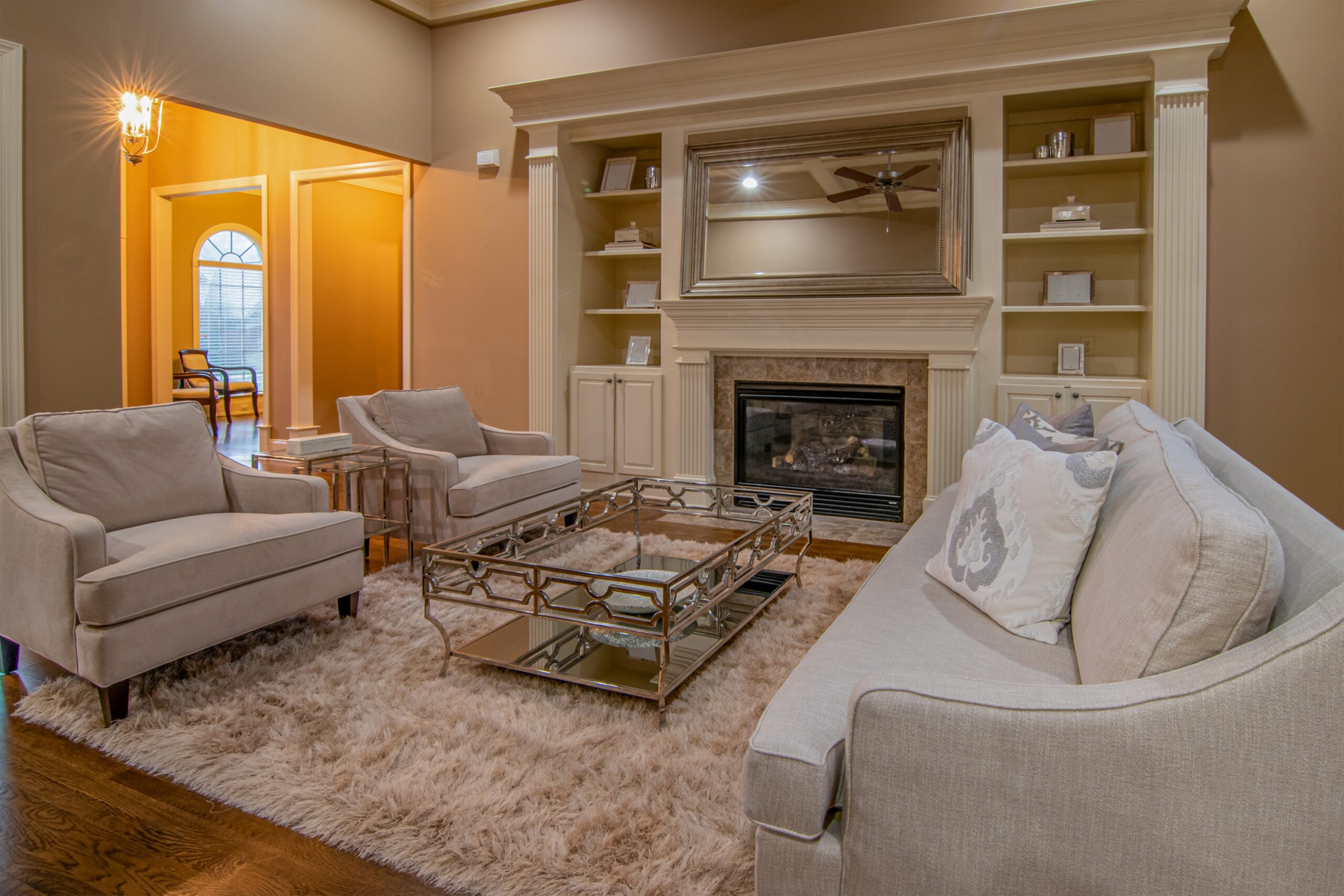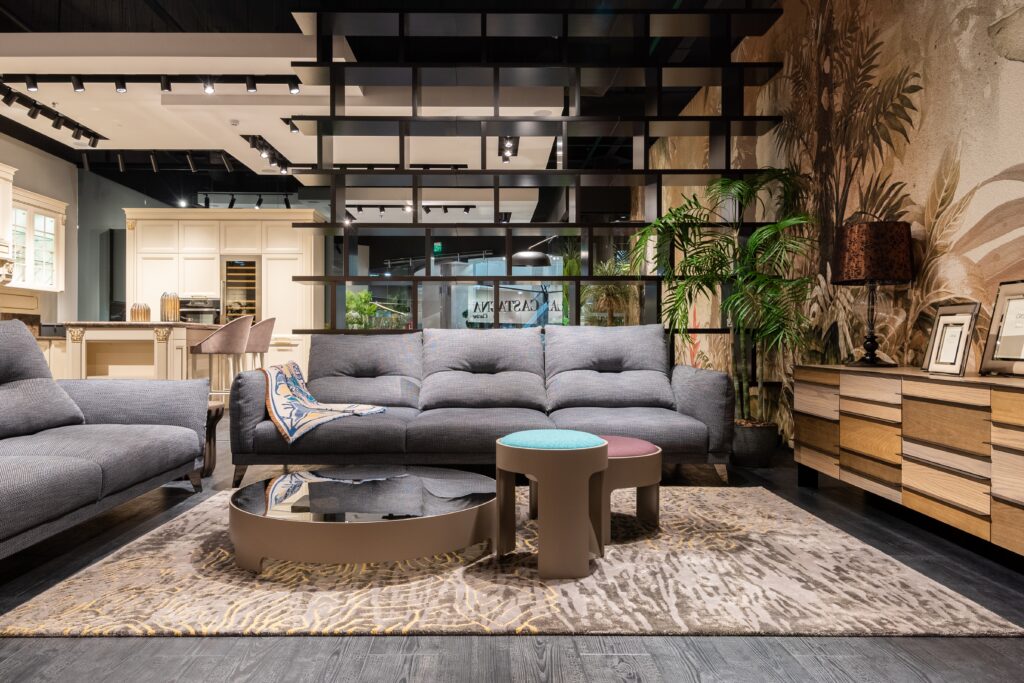
Table of Contents
Rugs, often regarded as the unsung heroes of interior design, hold a special place in homes, offices, and various spaces around the world. Beyond being mere floor coverings, rugs are versatile accessories that serve a multitude of functions. These woven masterpieces have not only adorned floors for centuries but have also found their way onto walls, tables, and even outdoor spaces, adding both aesthetic appeal and practicality to any setting.
Countries like Iran, Turkey, Pakistan, India, and many other countries produce fine-quality handmade rugs. Countries like China & USA mass produce rugs using machines. These countries also produce rugs such as Qushak Rugs, Persian Rugs, Kilim Rugs and other handmade rugs.
In this article, we delve into the fascinating world of rugs and explore their diverse uses that go far beyond their traditional roles.

Why We Need Rugs?
Warmth and Comfort
One of the primary functions of rugs is to provide warmth and comfort to living spaces. Placing a soft, plush rug in a room can instantly transform it into a cozy oasis, especially during the colder months.
A rug insulates the floor, trapping heat and providing a barrier between cold surfaces and bare feet. Whether it’s the soft touch of a rug in a bedroom that greets you in the morning or the warm embrace of a living room rug on a chilly evening, the comfort they offer is undeniable.
Aesthetic Enhancement
A rug is a powerful design element that can tie a room together, adding color, texture, and pattern to otherwise plain spaces. They serve as artistic canvases that reflect personal style and enhance the visual appeal of a room.
From classic oriental types to contemporary abstract designs, the options are endless, allowing homeowners to express their individuality through their choice of rug. A strategically placed rug can create a focal point, define separate areas within a room, and complement the existing decor.
Noise Reduction
In bustling households or busy offices, noise reduction is essential for maintaining a peaceful and productive environment. Rugs act as natural sound absorbers, dampening echoes and reducing noise levels.
This is particularly beneficial in open-concept spaces where sound travels more freely. By placing rugs strategically, you can create a quieter atmosphere that fosters better communication and concentration.
Protection for Floors
Beyond their decorative appeal, rugs offer practical benefits by protecting the underlying flooring. Areas such as hallways and entryways are prone to wear and tear.
Placing rugs in these spots shields the floor from scratches, scuffs, and other damage caused by foot traffic, furniture movement, and accidental spills. Rug acts as a barrier, preserving the quality of the flooring beneath and potentially extending its lifespan.
Versatility in Placement
While traditionally associated with floors, rugs have broken free from their conventional roles and found their way into various unexpected spaces. Wall hangings, known as tapestry rugs, add an artistic touch to walls, infusing rooms with texture and depth.
Smaller rugs can be draped over tables, serving as eye-catching tablecloths or runners. Outdoor rugs have also gained popularity, transforming patios and decks into inviting extensions of indoor living spaces.
Cultural Significance and Storytelling
Rugs have cultural significance in many societies, often representing traditions, stories, and craftsmanship. Tribal rugs, for instance, carry intricate patterns that depict the history and heritage of the community that created them.
These rugs serve as tangible links to the past, preserving cultural narratives and craftsmanship techniques for generations.
Where we can place Rugs?
Rugs have transcended their traditional roles as mere floor coverings and can now be placed in a variety of spaces, both indoors and outdoors, to enhance aesthetics, comfort, and functionality. Here are some creative and unexpected places where you can incorporate rugs:
1. Living Rooms:
This is the most common area to place rugs. They can cover the entire floor space or be strategically positioned under furniture arrangements to define seating areas and add a touch of luxury.
2. Bedrooms:
Place rugs at the sides or foot of the bed to provide a soft, warm landing spot when you wake up. A larger rug can anchor the entire room and create a cozy atmosphere.
3. Dining Rooms:
Underneath dining tables, rugs can protect the floor from chair movement and spills. A rug can also define the dining space within an open-concept layout.
4. Hallways and Entryways:
High-traffic areas can benefit from rugs that protect the flooring while also welcoming guests with a touch of style and comfort.
5. Kitchens:
Place rugs in front of sinks and counters to alleviate the strain of standing for long periods. Be sure to use durable and easy-to-clean rugs in this area due to potential spills.
6. Bathrooms:
Small rugs or mats in bathrooms can prevent slipping and add warmth to cold tile floors.
7. Outdoor Spaces:
Transform patios, decks, and even balconies into extensions of your living space with outdoor rugs. These rugs are designed to withstand the elements and add comfort to outdoor seating areas.
8. Walls (Tapestry Rugs):
Rugs can be hung on walls as unique pieces of art, creating a focal point and adding texture and color to your decor.
9. Beneath Furniture:
Place rugs beneath coffee tables, side tables, or even beds to add a layer of softness and complement your furniture.
10. Staircases:
Stair runners are a practical and stylish way to reduce noise, protect high-traffic areas, and add a touch of elegance to your home.
11. Playrooms and Nurseries:
Colorful and playful rugs can provide a safe and comfortable surface for children to play on.
12. Office Spaces:
Rugs can dampen noise in offices, define workspaces, and add a touch of comfort to your professional environment.
13. Reading Nooks:
Create a cozy reading corner by placing a rug, some cushions, and a comfortable chair or bean bag.
14. Beneath Furniture in Open Spaces:
In open-concept layouts, use rugs to define different zones within the same space, such as a living area, dining area, and workspace.
15. Under Coffee Tables:
A rug beneath a coffee table can tie together your seating area and provide a soft surface for resting your feet.
Remember that the size, material, and design of the rug should complement the specific space and its function. From traditional Persian rugs to modern minimalist designs, rugs have the ability to elevate and transform various areas of your home, making them an essential aspect of interior design.
How To Shop Rugs?
| Shop By Style | Shop by Color | Shop By Size (Feet) | Shop By Material |
| Animal Print | Black & White | 2X3 | Cotton |
| Bohemian | Blue | 3X5 | Jute |
| Coastal | Brown | 4X6 | Leather |
| Pet-Friendly | Green | 5X8 | Natural Fiber |
| Farmhouse | Pet-Friendly | 6X9 | Pet-Friendly |
| Geometric | Neutral | 8X10 | Recycled |
| Kids & Nursery | Orange | 9X12 | Silk |
| Moroccan | Pink | 10X14 | Synthetic |
| Indoor/Outdoor | Purple | Extra-large | Viscose |
| Contemporary | Red | Runners | Wool |
| Shags | Beige & Cream | Round | Vinyl |
| Solid Colors | White | Oval | |
| Southwestern | Black | Square | |
| Scandinavian | Grey |
Conclusion
Rugs are far more than functional floor coverings; they are essential tools for interior design, comfort, and personal expression. From providing warmth and comfort to acting as decorative centerpieces, rugs have evolved to become versatile assets in diverse settings. Their ability to enhance aesthetics, reduce noise, and protect floors makes them indispensable in both residential and commercial spaces. As time goes on, the timeless elegance and multifaceted uses of rugs continue to captivate and enrich our living environments.
FAQs
Q. What is an area rug?
A. An area rug is a large, decorative rug that covers a specific area of a room’s floor and is often used to define a space or add style.
Q. How do I choose the right rug size for a room?
A. Measure the area you want to cover and leave a border of 18–24 inches for the best fit.
Q. What materials are rugs made from?
A. Rugs can be made from various materials, including wool, synthetic fibers, cotton, jute, and silk.
Q. What is the difference between hand-tufted and hand-knotted rugs?
Hand-tufted rugs are made using a handheld tool to punch yarn into a fabric, while hand-knotted rugs involve individually tying knots for each strand of yarn.
Q. How do I clean and maintain my rug?
A. Regular vacuuming and spot cleaning can help maintain your rug. Follow the instructions provided by the manufacturer.
Q. Can I use an outdoor rug indoors?
A. Yes, outdoor rugs can be used indoors, but indoor rugs may not be suitable for outdoor use due to exposure to the elements.
Q. Are handmade rugs more expensive than machine-made rugs?
A. Generally, handmade rugs are more expensive due to the labor-intensive process and craftsmanship involved.
Q. What’s the difference between a rug and a carpet?
A. Rugs are smaller, portable floor coverings, while carpets cover an entire room’s floor and are typically installed wall-to-wall.
Q. Do rugs help with sound insulation?
A. Yes, rugs can absorb sound and reduce echo in a room, making them a good choice for noise control.
Q. Which country makes the best rug?
A. Countries like Iran, Turkey, Pakistan, India, and many other countries produce fine-quality handmade rugs. Countries like China & USA mass-produce rugs using machines. These countries also produce rugs such as Qushak Rugs, Persian Rugs, Kilim Rugs, and other handmade rugs.